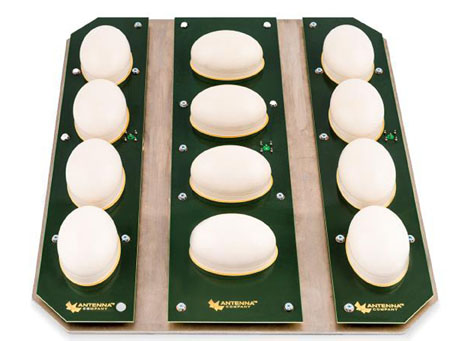By Jim Harrison
Advances in wireless technology are delivering speeds of 433 Mbits/s from your home (and coffee shop) router with 802.11ac, along with promises of gigabit/s rates. 802.11ac can be dozens of times faster than 802.11n. To provide that kind of speed, 802.11ac works in the 5-GHz band, using plenty of bandwidth (80 or 160 MHz), and up to eight spatial streams (MIMO) with beamforming. The multiple antennas used in the new routers and client devices are critical elements — sometimes hidden and sometimes extremely noticeable.
Antenna Company’s SuperShape technology wireless antennas are said to improve signal gain and isolation. The manufacturer reports benchmark tests have shown these antennas increase range or throughput by 50% to 100%, in both line-of-sight and non-line-of-sight test conditions. Using their proprietary dielectric resonator design approach, with unique polymer materials, the shape and size of the antennas can be tailored to meet custom demands for system integration — in either dual- or single-band.

Fig. 1: One example of a SuperShape Wi-Fi antenna design.
The company has developed compact designs optimized for use in laptop computers and other mobile computing devices. In addition to improvement in MIMO Wi-Fi performance, these new antenna designs can be 40% smaller than competing designs. They also have developed robust multi-band antenna solutions for telematics applications, which require global satellite tracking and cellular connectivity.
Advertisement
Learn more about The Antenna Company





